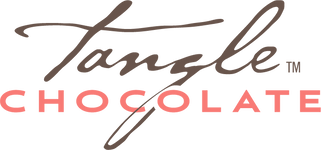MOVING TOWARDS JUSTICE IN THE CHOCOLATE INDUSTRY
Jun 11, 2020
Although I’ve loved eating chocolate my whole life, what made me commit to the business of chocolate is the opportunity it offers to contribute to social, economic and climate justice in cacao-producing countries. I’ve written other articles here about the ethics of Tangle Chocolate, and I’ll continue to write more, but as a micro business, our practices don’t have the kind of impact that the policies and practices of the biggest chocolate players in the industry do. (The top 10 chocolate companies are listed at the end of this article.) Those companies have been moving towards correcting some age-old injustices little by little, whether because consumers are demanding change or because the businesses genuinely want to make the changes themselves. But last fall, in perhaps a watershed moment, cacao-producing countries of West Africa took matters into their own hands by instituting a radical policy. This article places this development in a historical context, explains what the policy is, and touches on the impact that one of the major chocolate industry players anticipates it might have.
HOW DID THE INJUSTICE BEGIN?
The chocolate trade between what we now call Central and South American countries and Europe began in the sixteenth century when Hernan Cortez violently conquered the Aztec empire and began, along with other European explorers, to include cacao beans in their homebound cargo. From that time until today, the history of chocolate documents domination, slavery, and the constant pursuit of better and cheaper ways to grow and harvest cacao and make chocolate. (The craft chocolate movement, which dates to the late 1990s, is proudly known for its much more elevated ethics.) The quest for good, cheap chocolate eventually meant that West Africa became the top-producing location for cacao, which remains true today.
THE SITUATION IN 2020
More than 60% of the world’s cacao beans are grown in Ghana and Cote d’Ivoire, and a full 70% come from those two countries plus neighboring Nigeria and Cameroon. Mistreatment of workers, both children and adults, includes starvation wages, long hours, and dangerous work conditions. This reality has been quietly accepted for decades among big chocolate companies and people further up the supply chain than the cacao growers.
However, worldwide public outrage over this injustice in West Africa has been growing. Media reports dating back to 1999 began to expose industry conditions, and consumers wanted to see change. In response, in 2001, the eight largest chocolate companies signed the Harkin-Engel Protocol, pledging to end “the worst forms of child labor” by 2005. Achieving this goal requires that companies be able to trace where the cacao they are buying comes from. The date for meeting the goals of ending child labor and attaining traceability has been extended several times. As of this writing, June of 2020, the commitments have yet to be fulfilled.
“THAT’S NOT GOOD ENOUGH!” SAY GHANA AND COTE D’IVOIRE
In the fall of 2019, the governments of Ghana and Cote d’Ivoire took matters into their own hands and implemented a premium on the cost of cacao in order to raise the pay of their farmers. The $400 per metric ton premium is supposed to provide a living wage for the notoriously impoverished cacao farmers of West Africa, and Ghana has implemented the premium in full. The only accommodation Ghana is offering to chocolate companies is charging a lower price for lower-quality beans.
HOW HAVE BIG CHOCOLATE COMPANIES RESPONDED?
Lindt & Sprungli, the giant chocolate company perhaps best-known for their colorful, individually-wrapped truffles, buys 80% of its cacao from Ghana. Chief Executive Officer Dieter Weisskopf warned on March 3, 2020 that prices for Lindt products will be rising. There are many countries which have not implemented a premium, so Lindt could stop buying from Ghana and instead buy from somewhere else. But sourcing cacao beans that do not have the new premium attached would force Lindt to change its tried and true recipes for its chocolate and confections, which would be a massive expense. The alternative, which is what led Weisskopf to make his price increase announcement, is to stick with Ghana and the beans it has always bought.
Weisskopf counts Lindt among the chocolate corporations that support higher prices in principle and are aware of consumer demand for better treatment of growers. He says, though, that higher prices could prompt chocolate makers to opt for cocoa alternatives while also enticing farmers to grow more beans.
“Sooner or later that could lead to decreased volume demand for cocoa and on the other hand, of course, also lead to oversupply,” Weisskopf said. The threat if that were to happen is that the growers would be right back in the position they are currently in, forced to accept low wages and inhumane treatment if they are to have a job at all.
Top 10 Chocolate Companies by Net Sales, April 14, 2020
- Mars
- Ferrero
- Mondelez
- Meiji
- Hershey
- Nestle
- Lindt & Sprungli
- Pladis
- Ezaki Glico
- Orion
Sources for more information:
https://www.c-spot.com/atlas/historical-timeline/
https://www.theguardian.com/uk/2001/apr/28/world.patrickwintour
https://www.cbc.ca/news/world/child-labour-in-ivory-coast-an-ongoing-problem-1.283505
http://www.slavefreechocolate.org/harkin-engel-protocol
https://www.icco.org/about-cocoa/chocolate-industry.html


